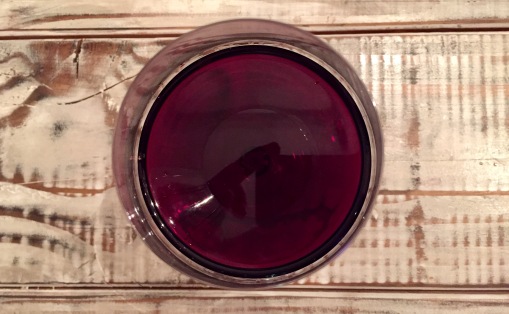[This bottle was provided as a sample for review purposes.]

Chile: home of Carmenere and inexpensive quality.
If you were starting up a wine venture today and were looking to maintain high quality but stretch your viticultural buck as far as possible, you would almost certainly go to Chile. While braver souls are now starting to venture to the more extreme climatic and geographical parts of the country in search of cutting-edge lands and the flavour potency and complexity that can come with them, those who stick to Chile’s warm central valley find themselves in something close to a grape-grower’s paradise: warm, mild, consistent growing seasons, refreshing cooling breezes at night off the surrounding mountains and a relative lack of vineyard pests. Since the Southern Hemispheric nation is fairly segregated from the rest of the world’s vineyard (with its closest main viticultural neighbour, Argentina, walled off by the Andes), it has managed to keep itself free from the devastating vineyard louse phylloxera, which has ravaged vines almost everywhere else and has required the bulk of the world’s wineries to graft their vines onto resistant North American rootstocks to allow their crops to survive.
What does all that mean from a commercial perspective? It means that you can have a vineyard with a lot of beneficial, normally highly costly or dangerous features — organic viticulture, no pesticides or herbicides, own-rooted vines — without the associated price tag or risk of crop loss. That allows you to make bottles like this one, a single-vineyard wine from 25 year-old vines planted on their own rootstocks, farmed organically and then hand-harvested, and then sell it to export markets at a shade over $15 a bottle. That combination of price and input quality is basically impossible in the majority of the wine world.

The bottle in question is the Emiliana Novas Gran Reserva Carmenere (85%)/Cabernet Sauvignon (15%), a throwback Bordeaux blend not presently seen in the grapes’ ancestral homeland. Centuries ago, Carmenere was one of the six red grapes that went into Bordeaux wines, joining Cabernets Sauvignon and Franc, Merlot, Petit Verdot and Malbec. The other five continue to fill Bordeaux bottles to this day, but Carmenere was decimated in French vineyards due to the arrival of the aforementioned phylloxera and eventually became extinct in Bordeaux. People thought it was lost to the world, but cuttings of it had accidentally been transported to Chile under the guise of Merlot, and in 1994 it was rediscovered for what it was, quickly becoming Chile’s new signature grape. How nuts is that?

Cork Rating: 1/10 (Sorry, but offer up a totally blank shiner and bad things happen.)
The term “Gran Reserva” here, while it has a rigid legal meaning tied to barrel and bottle aging requirements in Old World countries like Spain and Portugal, is a pure marketing term in Chile with no similar attached constraints. This bottle received 12 months of aging before release (much less time than a Spanish or Portuguese Gran Reserva would have to receive), 70% in oak barrels and 30% in stainless steel. It received both an extended cold maceration pre-fermentation and a post-fermentation rest on its skins to extract the maximum amount of colour, tannin, flavour and texture out of the used grapes.

Carmenere is known for both a smooth and silky texture and an array of herbaceous, borderline green flavours, and the Novas displays both in spades. A glass-coating deep ruby colour, it is spicy and herbal throughout, offering up a mix of paprika, celeriac, cherry cough syrup and burnt rubber aromas to go with sweet brambly blackcurrant fruit and tobacco leaf. Untamed and pleasantly rustic on the tongue, its lush body is disrupted by peppery, sandpapery tannins that make the wine seem much more three-dimensional, though perhaps at the expense of elegance. Brambly flavours of blueberry, currant, violets and pen ink gradually shift to dark chocolate, sage, tomato and green pepper, finishing with a slight but not unwelcome bitter edge as a result. This is a good example of the wild intrigue that is Carmenere, maybe not rounded off and tempered as well as it could have been by Cab’s bold fruit and solid structure. Still a ton of fun at that price tag.
86+ points
$15 to $20 CDN


Leave a comment